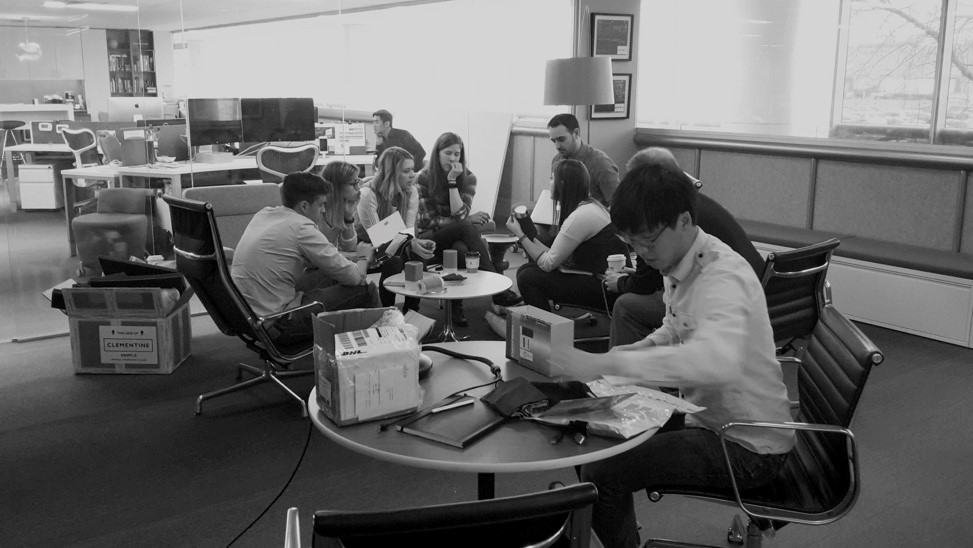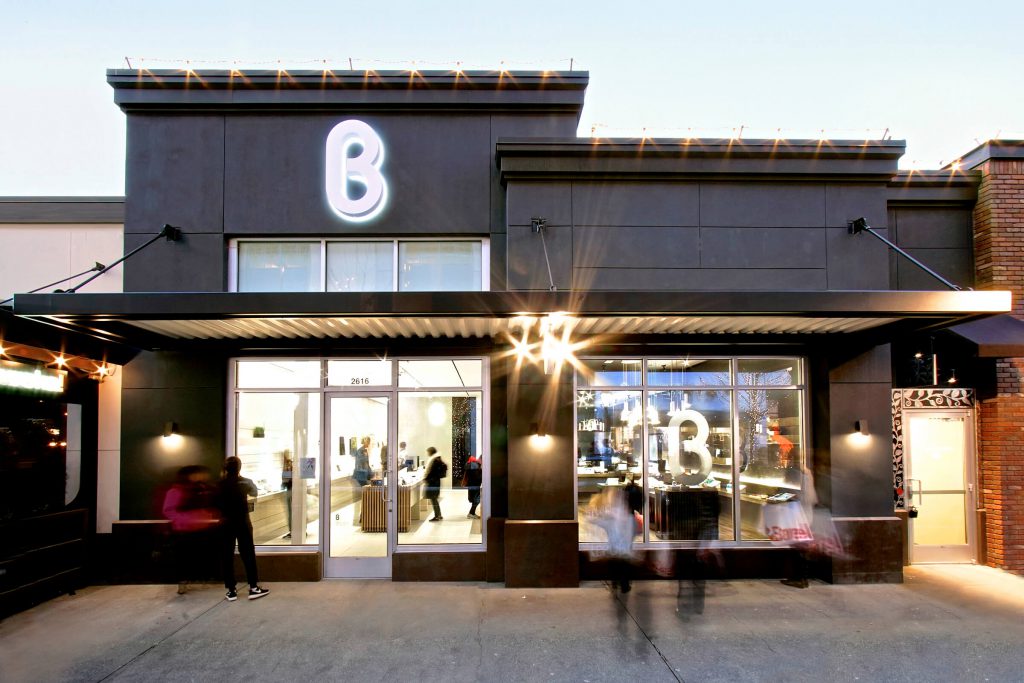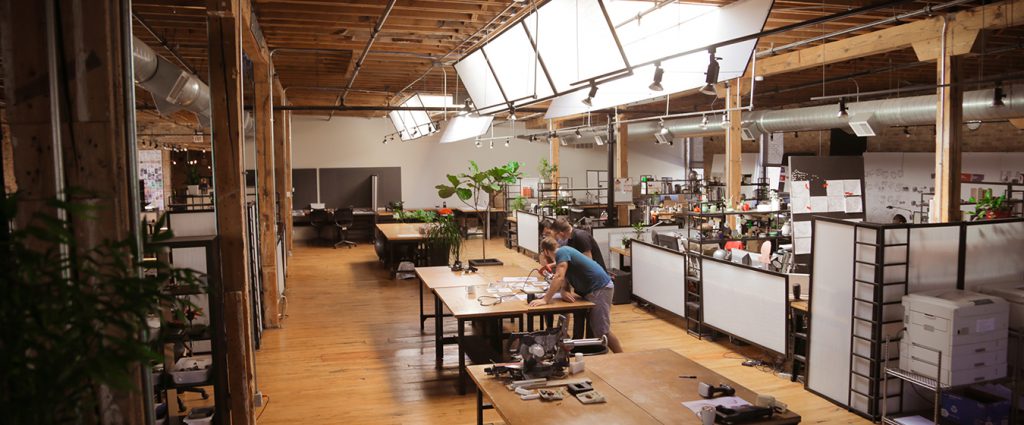IHA connected with session moderator, designer Paul Hatch of TEAMS Design, and panelists Richard Hughes of Whirlpool Corp., Rajat Shail of Honeywell and John Kennelly of b8ta to talk about the rapidly evolving smart home environment that they will discuss at the at the 2018 International Home + Housewares Show. At the Show, the Innovation Theater will feature 21 presentations over four days. Topics discussed will include smart home, consumer shopping preferences, branding and global market trends.
This Sunday afternoon session joins a product designer/strategist, design managers from two established global brands and a leader in a fresh new retail venture. Their varied experiences may reveal common issues and will offer valuable insights about consumers’ needs and concerns related to smart home devices.
Discussion moderator Paul Hatch is CEO of the industrial design and user experience firm TEAMS Design USA in Chicago. TEAMS, headquartered in Esslingen, Germany, operates studios in Hamburg, Shanghai and Belgrade, and works with many global corporations on their product strategies and IoT eco-systems.

Paul is also co-founder of Design House, a non-profit with a mission to help revitalize local manufacture. He co-authored two books about the impact of design and technology on business. He is also known for founding and running an extreme debate event called Fight Club, which The New York Times called “A Designer Slugfest”.

Richard Hughes, global manager, IOT & Advanced UX at Whirlpool Corporation, leads the UX design team responsible for shaping the future of the home. The team considers how appliances can help us and our families in our everyday lives. With more than 20 years’ experience in the digital design field, Richard and his team produce thoughtful experiences that remove complexity for the user. Richard has worked on connected appliance experiences for all the global brands since joining Whirlpool in 2009. Attaining simplicity and elegance are key to Richard’s designs, in order to make technology seamless to Whirlpool’s customers.

Rajat Shail, senior director of experience design at Honeywell, leads the company’s user experience team. Charged with transforming the Fortune 100 conglomerate into a design leader and admired brand, Rajat has helped to build a 300 people-strong design house with studios across the globe. In his current role with the Honeywell Connected Homes business he is at the intersection of physical and digital consumer touchpoints—helping to realize truly “phygital” solutions.
Previously, Rajat contributed to industrial, brand and user experience design for brands such as Whirlpool, KitchenAid, Jennair, Motorola and Steelcase. He holds graduate degrees from the Indian Institute of Technology, Bombay and the Illinois Institute of Technology, Institute of Design in Chicago. Rajat’s design approach transcends tangible products to the innovation of methods, services and systems.
b8ta started as a software-powered retailer designed to make physical retail accessible for all. The company helps people discover, try, and learn about new tech products in real life while empowering brands with a simple retail-as-a-service model that puts them in control. b8ta operates stores in shopping centers in New York, Austin, Houston, Seattle and several cities in California, in addition to operating within Lowe’s stores in many states.

John Kennelly, General Manager of Built by b8ta, started as employee #1 at b8ta—a software-powered retailer designed to make brick and mortal accessible for all brands, and evolve the retail experience for today’s evolving consumers. b8ta, which operates stores in New York, Austin, Houston, Seattle, several cities in California, and within Lowe’s stores in many states, helps shoppers discover, try, and learn about the latest tech products in real life. John launched the Partnerships team that grew the b8ta flagship business to more than 79 locations. He has since moved to his next challenge as General Manager of Built by b8ta, where he owns strategy around the newest b8ta product launching in 2018—a simple retail-as-a-service model that empowers brands by putting them in control of their own retail flagship.
A nine-year tech industry veteran, John began his career at Accenture in tech consulting and was later part of back-to-back software acquisitions, one to Google and the other to Apple. John is a lover of all things startup and has since moved back in the direction of early-stage technology, this time in hardware.
Gentlemen, what is the most exciting or rewarding part of your work? What fuels your inspiration?
Paul: Every new project brings about new and interesting insights, whether generated by research or ideation, and it is endlessly rewarding to see these insights turn into successful solutions in the real world.
Richard: Knowing that what our team creates can have an impact on families around the world is pretty rewarding. Hearing the feedback from our users that we made their lives just a little bit easier makes all the time, attention to detail and effort so worthwhile. I’m often inspired by those little delighters that make us smile when using a product or app, noticing the care that was taken by the designer, developer or engineer makes you really appreciate the effort that went into the creation. I’m really fortunate to have worked with so many talented people across different disciplines, and my design aesthetic, skills and philosophy are all attributes I developed by learning from them.
Rajat: Working with creative individuals to solve problems and create solutions, which can fundamentally improve or enhance the lives of the users and make the world a better place. The idea that anything is possible truly inspires me.
John: As b8ta’s first employee, I’ve spent almost three years getting an early look at the most innovative consumer technology products. Seeing the amazing products that our partners create has been the most exciting part of my work. My inspiration is fueled by our founding team—I feel very lucky to have spent three years working for three brilliant entrepreneurs. Wanting to help them turn b8ta into a success story gets me out of bed every day.

Can you name a pivotal event or project that impacted your career or company?
Paul: One of the biggest challenges and opportunities came twenty years ago while I was working at TEAMS in Germany and was asked to set up a branch in the U.S. Since that point I have been in constant evolvement, aligned with the growth of the company and with the changing role design and UX has for our clients.
Richard: I may primarily be a designer, but I’m also pretty dangerous in code. I firmly believe that in order to create experiences that push the envelope of the technology, you have to have a good understanding of its capabilities. I recall when working on the first Whirlpool connected appliances and actually coding the first ever remote command. A team was in one location and I was in another. We were on the phone, and as I uploaded the code and sent the instruction from the user interface, I heard a loud cheer on the other end as the appliance reacted. I thought to myself this is almost an Alexander Graham Bell moment, we’re making history today.
Rajat: Every project is a learning experience and impactful to one’s career whether one succeeds or fails. The one that impacted me the most was building a new design language strategy for Honeywell Corp. The project entailed creating a global standard and tools, which helped guide our design. This enables us to build better products for multiple contexts and users. But most importantly it has created a brand identity, which unifies Honeywell’s diverse offerings across multiple physical and digital touch points throughout the user journey. The creation, implementation, testing and evangelism of this project taught me many lessons.

John: I think last year’s rollout of our Smart Home program with Lowe’s was something that impacted our company in a big way. We rolled out 70 stores over the course of just a month. It wasn’t the smoothest rollout in history but with a tiny team we opened 70 stores in all corners of the U.S., so we learned how much our small team is capable of. I think this sets us up great for the big plans we have in 2018.
In the past few years, what has changed most in your business? How has your company met these challenges in the way you do your work?
Paul: Probably the biggest change was the integration of user experience principles into our design practice. While the elements of human-centered design were always there, the way UX forces 360 collaboration is new, and has given us, and our clients, some very powerful tools.
Richard: Traditionally, an appliance has had the same functionality on the fifth year of ownership as the day you bought it. All the features it would ever have were in it from day one. That’s not necessarily the case anymore. Today, our appliances adapt to the way you use them and learn about your preferences. Also, through connectivity, we can add new capabilities and ways of interacting with your appliances if they’re useful and as they become available. Our voice assistant and smart home product integrations are examples of that. In the kitchen, our new integration with Yummly highlights an elegant, end-to-end experience that can help answer the question, “What’s for dinner?”

I have worked in the connected, IOT space for the past 5 years. It continues to evolve through the forces of customer expectations and enabling technologies. Customer expectations are the frontier for opportunity. Customers benchmark top of the line consumer electronic products and expect the same level of ease and functionality—in both personal and industrial products. Tradeoffs between form and function are an old paradigm; barriers between physical and digital interfaces have dissolved. Solutions that offer simplicity with poetic elegance are the table stakes. Honeywell has responded to this opportunity by building a strong user experience design team embedded into each of its businesses. We want to enable smarter business models, offering bespoke solutions to the customers.
John: I think in the past few years what has changed most is that the rest of the world is catching up to what we knew three years ago—brick and mortar is not going away but it is changing, and brands who don’t acknowledge that will be left behind. We’re excited to be leading the charge.
Why did you choose to speak at the International Home + Housewares Show?
Paul: With so many changes going on in the world of IoT, it was important to hold a forum to discuss updates, insights and viewpoints on this ever-growing sector.
Richard: It’s such a great opportunity to connect with industry colleagues and share some of our experiences. We’ve learned a lot, especially in this new, emerging space. I’ve talked to people outside our company and know that there is a real interest in the work we’ve been doing. I’m really excited to be a part of a panel of other professionals working in the smart home space and learn from their experiences too.
Rajat: Quite simply, because I think the lines between housewares and consumer electronics are blurring. Technology will be ubiquitous and inspired by the home—as we do more to live and work within our homes. Technology will coalesce with housewares to usher in a new era of ‘intelligent’ things. These things will work in unison and collect insights to better their own services and the lives of their users. The paradigm is shifting from objects or services, which solve user problems to ones that will anticipate need and adapt to the changing user lifestyle.
John: It seemed like a great opportunity to share more about b8ta and some of our new initiatives with an audience that aligns very well with our core partner base.
Connecting the Smart Home to the Homeowner
Sunday, March 11 3:30 – 4:20 p.m.
Innovation Theater, Lakeside Center room E350
Tell us what you will be speaking about and how this topic is important for Show audiences.
Paul: As companies begin to embrace the IoT and connected world, they shift their focus toward technology and data collection. Shifting to a human-centered approach to the design of eco-systems for the home will provide a better user interaction and thus much better data for company sustainability. Our panel will discuss recent insights and strategies critical for companies embarking on an IoT path.
Richard: Connecting the Smart Home to the Homeowner is a really great area for discussion. Not only do consumers face many choices around buying products for the home, now they have new questions to ask. Is this compatible with my other smart products? Will this product become obsolete? How is it exactly “smart”?
Since my fellow panel members and I work in this space on a daily basis, hopefully we can shed some light on some of these questions. I imagine we’ll discuss trends we’re seeing, touch on where our products are going in the future and help ease some of the unknowns.
In addition to this panel discussion, I’m also doing a Smart Talks session at the Smart Home pavilion. At both events I will focus on how b8ta is helping to bring smart home products to market via retail.

Paul, you’ve presented in the Innovation Theater before and the panelists are new to this venue. What are you looking forward to from speaking at the Innovation Theater?
Paul: The Innovation Theater creates an open forum for discussion about contemporary issues, and it’s always an excellent way to get to connect with like-minded people.
Richard: Since the audience is primarily focused on the home and new innovations for the house, I am really looking forward to some of those tough targeted questions and sharing my experiences. What I hope for is that I can help add value to people in attendance by discussing technology in a way that’s relatable.
Rajat: Understanding shared opportunities and challenges in the smart homes space. We may see a pattern in the shared experiences, which point to new emerging trends.
John: I’m looking forward to hearing the insights my fellow panelists have on our topic.
What do you see as consumers’ biggest concerns regarding housewares products or how to shop for them?
Paul: There is a huge amount of confusion and fear in users regarding connected products. The category is growing rapidly so it is imperative for companies and especially retailers to have the right approach to their users otherwise they will lose them at this most critical time.
Richard: Choices. Today’s consumers are inundated by them. Products are close to being pretty much available on-demand, with an almost limitless selection. Consumers have the new challenge of sorting and filtering to find out which is best for them. On top of that, they have to trust other people’s opinions on that product and hope for the best. I think there is a lot of opportunity in this area, and I believe we’ll see quite a bit of innovation in the near future.
Rajat: The biggest concerns regarding housewares products are the need for meaningful differentiation. With the proliferation of brands, segments and offerings, the market is saturated with options and ripe for disruptive innovation. Services in this space can add a new layer of value to the products. Cycle and delivery times are getting obtusely compressed and people want instant gratification. How does one design housewares products and fight obsolescence while maintaining value for the customer and revenue for the manufacturer without having to reinvent itself every six months?
John: I think the biggest thing that we have seen is a lack of knowledge. Especially in Silicon Valley, people take for granted how early we are into the smart home revolution, and most people need a lot of education about why they need smart products, let alone how they work.

What are some of today’s trends or issues that new product development professionals and/or retailers face in the housewares market?
Richard: The home is a very physical space. How do we truly experience a product and envision how it would work/fit in our home without physically interacting with it? While technologies like augmented/virtual/mixed reality and 3D try to achieve this to a degree, it’s not on par yet. I do see some exciting advances in technology though that will get this experience as close as it can be sooner than we think.
John: Focus on solving a problem rather than creating the prettiest or fanciest product. 80% of people make buying decisions to avoid pain as opposed to seeking pleasure, so focus on solving problems first when developing new products.
Thank you, Paul, Richard, John and Rajat, for sharing your perspectives on current and future products for the smart home environment. We look forward to learning from your experience and insights on Sunday, March 11 at 3:30 pm in the Innovation Theater. To learn more about the panel members, see:
The Teams Design website and Wikipedia
Whirlpool Corporation (NYSE: WHR) is the number one major appliance manufacturer in the world, with approximately $21 billion in annual sales, 92,000 employees and 70 manufacturing and technology research centers in 2017. The company markets Whirlpool, KitchenAid, Maytag, Consul, Brastemp, Amana, Bauknecht, Jenn-Air, Indesit and other major brand names in nearly every country throughout the world.
Honeywell invents and manufactures technologies that address some of the world’s most critical challenges around energy, safety, security, productivity and global urbanization. A Fortune 100 company with $39.3B in sales in 2016, Honeywell creates solutions that improve quality of life for people around the globe — generating clean, healthy energy, and using it more efficiently; increasing our safety and security; enabling people to connect, communicate, and collaborate; and equipping our customers to be even more productive. Its Great Positions in Good Industries have been a huge driver of the portfolio development and organic growth across industries, including homes and building, aviation, defense and space, oil and gas, industrial, chemicals and vehicles.
Learn from experts about how to invigorate your new products and services by enhancing your innovation efforts. Critical issues such as global design trends, branding, the needs of distinct consumer age and gender groups, and questions about smart/connected devices in our home environments all impact the home goods market. Be sure to attend the free executive-level educational sessions at the Innovation Theater. These programs will give you a fresh perspective as you walk the Show and will inspire, inform and improve your business. All programs will be audio-recorded and will be available at www.housewares.org after the Show.



